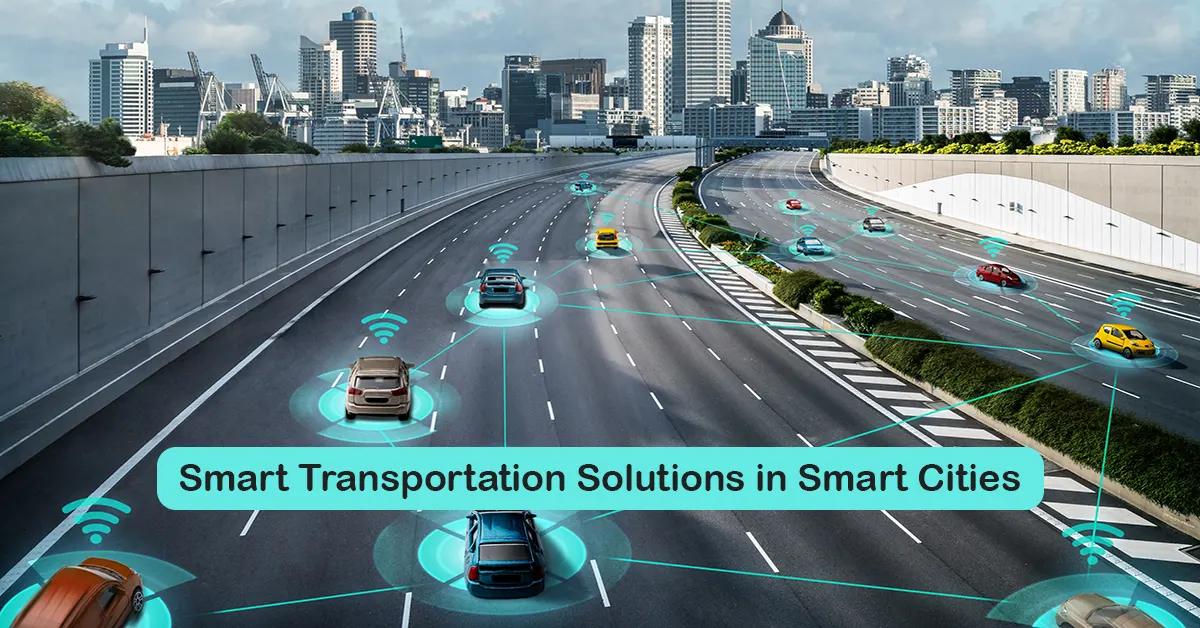
Introduction
The world of urban transportation is undergoing a remarkable transformation, paving the way for a future where streets have a mind of their own. With the convergence of cutting-edge technologies such as sensors, automation, and lightning-fast networks, smart transportation is revolutionizing the way we move through cities. In this article, we will explore the evolution of transportation, the definition of smart transportation, the benefits it brings, the challenges it faces, and real-world examples that showcase its potential.
Evolution of Transportation: From Horsepower to Rocket Power
Transportation has come a long way since the days of chariots. From horse-drawn carriages to electric cars, bullet trains, and even spacecraft, mobility has evolved alongside our stories, growth, and essence. The journey from simple chariots to exploring the stars has been nothing short of thrilling, highlighting the innovation and progress we have achieved.
Defining Smart Transportation: More Than Just a Buzzword
Intelligent Transportation Systems (ITS) refers to the integration of technology and transport to enhance the efficiency and safety of transportation systems.
This blending of technology and transport encompasses several key aspects:
Sharp Management: ITS focuses on effectively managing various transportation components, such as traffic flow, vehicle routing, and logistics. By utilizing advanced algorithms and real-time data analysis, smart transportation systems optimize the use of resources and improve overall efficiency.
Top-Notch Efficiency: The goal of smart transportation is to maximize the efficiency of transportation networks. By leveraging technologies like the Internet of Things (IoT) and 5G, ITS enables seamless communication between vehicles, infrastructure, and users. This connectivity facilitates real-time monitoring and coordination, leading to smoother traffic flow, reduced congestion, and shorter travel times.
Uncompromised Safety: Safety is a paramount concern in smart transportation. ITS employs advanced sensors, cameras, and communication systems to detect and prevent accidents. By providing real-time information on road conditions, hazards, and potential risks, smart transportation systems enhance safety for drivers, passengers, and pedestrians.
Responsive and Futuristic Roads: Smart transportation aims to create roadways that can adapt and respond to changing conditions. By leveraging IoT and 5G technologies, ITS enables intelligent traffic management, dynamic routing, and predictive maintenance. This results in road networks that are more efficient, resilient, and capable of handling future transportation demands.
Improved Transportation Experience: Smart transportation goes beyond just incorporating cool tech. Its primary focus is to enhance the overall transportation experience for users. By providing real-time information, personalized recommendations, and seamless connectivity, smart transportation systems empower users to make informed decisions and have a smoother and more enjoyable journey.
Intelligent Transportation Systems (ITS) represents the convergence of technology and transport to create efficient, safe, and user-centric transportation networks. By leveraging technologies like IoT and 5G, smart transportation aims to improve the overall transportation experience while ensuring top-notch efficiency and uncompromised safety.
Benefits of Smart Transportation: Beyond Cool Tech
Safety First, Always: With autonomous transportation systems powered by machine learning, IoT, and 5G, the number of accidents can significantly decrease. Smart transportation technology enables roads to think and react, making traffic accidents a thing of the past.
Boss-Level Management: By collecting and analyzing vast amounts of data from various sources, cities can proactively address infrastructure issues, resulting in smoother commutes and optimized traffic flow.
Efficiency is Key: The availability of quality data allows city planners to make informed decisions, leading to optimized resource utilization and well-crafted schedules. This results in traffic that flows seamlessly, reducing congestion and travel times.
Save More Than Just Time: Smart transportation systems focus on cost reduction through preventative maintenance, intelligent energy usage, and accident prevention. This not only saves money but also contributes to a greener and more sustainable environment.
Rapid Insights in Real-time: Real-time data and analytics provide city traffic management with a comprehensive view of traffic conditions, enabling faster responses to emergencies and improved overall traffic management.
Additional Benefits:
Securing the Streets: Prioritizing Cybersecurity in Smart Transportation
In the era of smart transportation, cybersecurity takes center stage as a crucial element in ensuring the safety and functionality of these advanced systems. With the increasing reliance on interconnected technologies, it is essential to implement robust defenses against cyberattacks to protect both the digital infrastructure and physical streets.
Smart transportation systems recognize the significance of cybersecurity and place it as a top priority. These systems employ comprehensive measures to safeguard against potential threats, ensuring the integrity and reliability of the entire transportation network.
To combat cyberattacks, smart transportation systems utilize advanced security protocols such as encryption algorithms, secure communication channels, and constant monitoring systems. These measures work together to identify and mitigate any potential vulnerabilities or suspicious activities in real-time.
By prioritizing cybersecurity, smart transportation systems not only protect sensitive data but also ensure the smooth operation of traffic management systems, vehicle-to-vehicle communication, and infrastructure control. This proactive approach creates a safe and secure environment for commuters, pedestrians, and all stakeholders involved in the transportation ecosystem.
Additionally, collaboration between industry experts, government bodies, and cybersecurity professionals is crucial in developing and implementing effective cybersecurity strategies. Regular audits, vulnerability assessments, and ongoing training initiatives help ensure that smart transportation systems remain resilient against emerging threats.
As smart transportation continues to evolve, the importance of cybersecurity cannot be overstated. By staying vigilant and proactive in implementing robust defenses, we can build a transportation infrastructure that is secure, efficient, and reliable for the benefit of all.
Greening Our Cities: By promoting mass transit and responsible resource usage, smart transportation aims to reduce emissions and create eco-friendly urban environments. It encourages the use of public transportation options such as buses, trams, and trains to decrease reliance on private vehicles.
This shift helps alleviate traffic congestion and significantly reduces carbon emissions, contributing to improved air quality in cities. Smart transportation also emphasizes responsible resource usage by optimizing fuel consumption, integrating eco-friendly technologies, and promoting alternative energy sources. These efforts create a sustainable transportation system that minimizes environmental impact while ensuring efficient mobility for urban residents.
Keeping Goods Moving: Smart transportation plays a crucial role in optimizing the movement of goods, ensuring efficient and timely delivery through intelligent logistics systems.
Challenges of Smart Cities: Not Just Sunshine and Rainbows
Powering Up Smartly: The implementation of smart transportation systems requires significant power consumption, posing a challenge in terms of energy efficiency. However, ongoing innovations in green tech solutions offer promising ways to address this issue.
Handling Data with Kid Gloves: The vast amount of data generated by smart transportation systems requires careful management, storage, and processing to ensure data privacy and security.
Functioning of Smart Transportation: More Than Meets the Eye
Public Infrastructure vs. Automotive Industry: Smart transportation goes beyond just self-driving cars and includes public infrastructure like buses, trams, and trains. These modes of transportation are essential components of a well-connected and efficient transportation system. The automotive industry plays a crucial role in the development of vehicles that are equipped with smart technologies.
These advancements aim to enhance safety, convenience, and overall commuting experience. Whether it’s self-driving cars or smart buses, the automotive industry is at the forefront of driving innovation in transportation. By integrating smart technologies into public infrastructure, we can expect improved connectivity, reduced traffic congestion, and a more sustainable environment. Embrace the future of transportation, where the automotive industry and smart infrastructure work together to revolutionize the way we travel
Enter the Smart Intersection: Smart intersections harness cutting-edge technologies to optimize the flow of traffic, ensure pedestrian safety, and enhance overall road safety. These advanced systems utilize intelligent sensors and cameras to detect and monitor vehicles and pedestrians in real-time.
By analyzing this data, smart intersections can make informed decisions and make adjustments to traffic signals and patterns accordingly. This remote management and control capability allows for dynamic and immediate responses to changing traffic conditions, reducing congestion and improving the efficiency of transportation networks. With the integration of smart technologies, intersections become proactive in promoting safety and smooth traffic flow.
Real-world Examples: It’s Happening Now
Miami Dade’s Genius Move: Miami Dade’s Advanced Traffic Management System, powered by innovative technology, has significantly reduced congestion and improved traffic flow in the city.
All Aboard SEPTA’s Safe Train: SEPTA has implemented positive train control, a smart transportation solution that enhances the safety and reliability of train journeys.
SMART’s Slick Dispatch: SMART’s Dispatch System, utilizing advanced technology, simplifies dispatching and maintenance operations, ensuring efficient public transportation services.
Conclusion: The Smart Way Forward
Smart transportation is reshaping cities, making them safer, more efficient, and environmentally-friendly. With its focus on integrating technology and transport, smart transportation is propelling us into a future of seamless movement and urban sustainability. By embracing the possibilities offered by smart transportation solutions, cities can create a future where streets are smarter than ever, and the possibilities truly are endless.




